VMware Homelab in 2015 – Systems Revised with vSphere 6
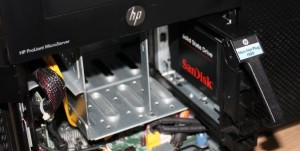 In the past three years I’ve presented several systems that can be used for VMware Homelabs. Servers for home use are typically not rack based. A good home server is inexpensive, silent and has a low power consumption. In this post I am going to revise the systems presented in previous posts to see how they work with ESXi 6.0:
In the past three years I’ve presented several systems that can be used for VMware Homelabs. Servers for home use are typically not rack based. A good home server is inexpensive, silent and has a low power consumption. In this post I am going to revise the systems presented in previous posts to see how they work with ESXi 6.0:- HP Microserver N36L / N40L / N54L
- HP Microserver Gen8
- Intel Next Unit of Computing (NUC)
- Gigabyte BRIX
- VMware Workstation
- Nested ESXi on vCloud Air
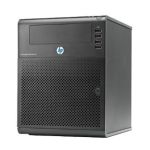 HP Microserver N36L / N40L / N54L
HP Microserver N36L / N40L / N54L
The original post was created with the HP Microserver N40L. There is no difference between the models except the CPU power. The latest available N54L has an AMD Dual Core 2.20GHz CPU. The Gen7 Microserver is a solid system that can run ESXi without any problems. Unfortunately the CPU power is very limited. It can run small VMs without problems, but it is almost to weak to run a vCenter Server 6.0 for example. I’m currently using it no longer as ESXi but for my homelab as shared storage with FreeNAS.
- AMD Turion CPU with 2x 2.20GHz
- Up to 16GB Memory (Only 8GB supported!)
- 4 HDD Slots
- 1x Gigabit LAN onboard
- 2 PCI-e Slots (16x, 1x)
- Remote Access Card available
- ESXi 6.0 works without any modifications
What to buy?The system is deprecated. You can try to get a used one on eBay.
- HP ProLiant G7 MicroServer N54L ($300)
- Patriot Gamer 2 Series 16GB 240-Pin DDR3 PC3 ($130)
- HP Micro Server Remote Access Card Kit ($100)
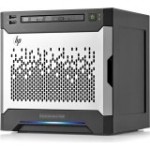 HP Microserver Gen8
HP Microserver Gen8
The Generation 8 Microserver was a revised version and comes with more power, upgraded ports and an integrated iLO. It is also the only tested system that is officially supported by VMware and listed in the HCL. The Ivy Bride Intel CPU has great performance. The downside is that the system is not quite low-priced. I’m currently using it loaded with ESXi 6.0 as my main system for evaluations in my home lab.
- Many CPUs available eg. Intel E3-1220V2 with 4x 3.1GHz
- Up to 16GB Memory
- 4 HDD Slots
- 2x Gigabit LAN onboard
- Integrated iLO
- MicroSD Slot for ESXi
- ESXi 6.0 works best with HP Customized Image
What to buy?There are rumors about a Gen9 microsever, but nothing officially confirmed. Gen8 is currently the latest version of the microserver. It is available in many stores.
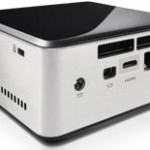 5th Gen Intel Next Unit of Computing (NUC)
5th Gen Intel Next Unit of Computing (NUC)
The Intel NUC (Next Unit of Computing) family has grown to the 5th generation in 2015. The latest Broadwell based NUCs are available with, or without 2.5″ drive support. Whether you have a 4th, or a 5th Gen NUC, these systems are a great choise and very wide-spread as VMware Homelabs. To install ESXi 6.0 you have to create a customized ESXi Image.
- i3, i5 and i7 Broadwell Intel CPU available
- Up to 16GB Memory supported (1.35V SODIMM)
- Probably 32GB Memory possible with I’M Intelligent Memory
- 1x Gigabit LAN onboard
- M.2 SSD support
- 2.5″ HDD/SDD support
What to buy?Do not buy a celeron NUC if you want to use it with ESXi. It’s still ok to buy a 4th gen NUC. You should buy at least an i5.
- NUC5i[x] ($300 for i3, 600$ for i7)
- Crucial 16GB Kit DDR3 1600 1.35V ($110)
- Transcend MTS600 M.2 SSD 128GB (~$60)
- 2.5″ Hard Disk Drive List (~$70)
- SanDisk Cruzer Fit 8gb ($10)
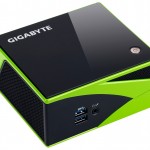 Gigabyte BRIX
Gigabyte BRIX
Gigabyte BRIX are very similar to Intels NUC. BRIX Pro are high performance systems with 2.5″ HDD/SDD support and a quad-core CPU. They also have VT-d support and thus the good candidates for ESXi. The fastest available CPU is an Intel Core i7-4770R (4x 3.90 GHz). The systems are compared to Intels NUC a little bit less expensive. To install ESXi 6.0 you have to create a customized ESXi Image.
- i3, i5 and i7 Intel CPU available
- Up to 16GB Memory supported (1.35V SODIMM)
- 1x Gigabit LAN onboard
- mSATA SSD support
- 2.5″ HDD/SDD support
What to buy?BRIX s and BRIX Pro have 2.5″ HDD support and are the best choice for ESXi. You should buy at least an i5.
- BRIX Pro GB-BXi5-4570R ($600)
- BRIX Pro GB-BXi7-4770R ($480)
- BRIX s GB-BXi3H-4010 ($260)
- BRIX s GB-BXi5H-4200 ($340)
- BRIX s GB-BXi7H-4500 ($490)
- BRIX GB-BXi3-4010 ($260)
- BRIX GB-BXi5-4200 ($340)
- BRIX GB-BXi7-4500 ($490)
 Supermicro SuperServer
Supermicro SuperServer
Supermicro X10SDV-TLN4F is based on Intel Xeon D1540 SOC CPU built on 14mm process, 8 cores (16 threads) with amazing performance yet low power (40 watts idle,80 watts under load). The case is CSE-721TQ-250B is 240Watts and has 4 drive bays. See review for details. No problems with vSphere 6.0 and here.
- 4 DIMMs, 128 GB of 2133MHz DDR4 RDIMM or 64GB UDIMM
- 6 x SATA3.0, 1 M.2 slot (M key for SSD, 2242/2280, PCIe3.0 x4), 2 USB3.0, 4 USB 2.0
- PCIe 3.0 x16
- Quad LAN ports with SoC dual 10GbE and I350-AM2 dual GbE (-F with dual GbE only)
- IPMI 2.0 with KVM and dedicated port
- 0-60C operating temperature
- 4 pin 12V DC and ATX power source
- Mini-ITX 6.7”x6.7”
- $1200 for motherboard/CPU + $200 for case
VMware Workstation
VMware Workstation as Homelab? It’s totally worth mentioning. When I want to test something quickly, it is the best tool. Most of my tests are done with VMware Workstation and you can even build a more complex test case like VMware Virtual SAN.
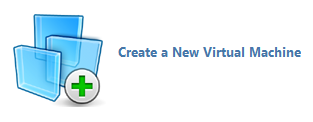
Nested ESXi on vCloud Air
Dedicated Server
0.3 (kW) x 24 x 30 x $0.25 (cost per kWhr) = AU$54.00
Free Hypervisor ESXi 6.0
vSphere 6.0 has been released and VMware provides a free version of their Hypervisor ESXi for everyone again. The license key can be created for free at VMwares website. It has no expiration date. The binaries you will receive as “Free Hypervisor” are 100% identical to the paid version.
Limitations
- No support
- Free ESXi cannot be added to a vCenter Server
- 2 physical CPUs
- Unlimited cores per CPU
- Unlimited physical Memory
- max. 8 vCPU per VM
No comments:
Post a Comment